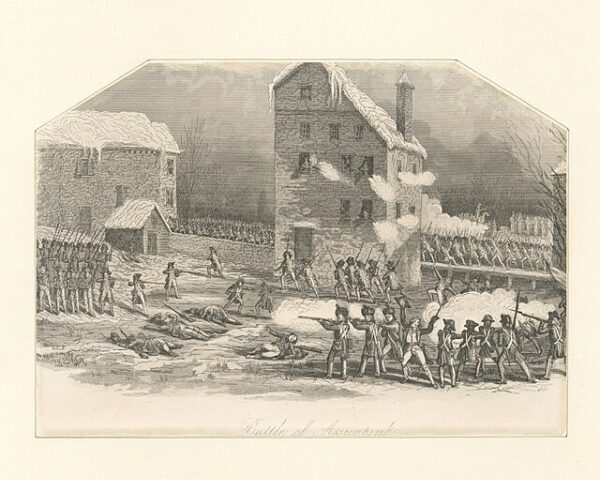On July 5, 1775—less than three months after the first shots of the American Revolution were fired at Lexington and Concord—the Second Continental Congress adopted what would become its final formal gesture of conciliation with King George III: the Olive Branch Petition. Drafted by moderate delegates seeking to avoid a full rupture with Great Britain, the petition represents one of the most paradoxical and revealing episodes of the early revolutionary period. While calling for peace, it was adopted by the same body that had just authorized the creation of the Continental Army and appointed George Washington as its commander. The result was a moment that combined diplomacy with open rebellion—a contradiction that underscores the uncertain and fluid nature of American political identity in 1775.
The petition itself was largely the work of John Dickinson, a Pennsylvania delegate best known for his earlier Letters from a Farmer in Pennsylvania, which had argued against Parliamentary taxation while affirming colonial loyalty to the Crown. Dickinson, though sympathetic to the grievances of Massachusetts and other radical voices, remained convinced that reconciliation was still possible. He and like-minded moderates believed the king had been misled by his ministers and Parliament, and that if he could be made aware of the colonies’ true sentiments, he might intervene to halt the drift toward war.
The Olive Branch Petition was careful in tone. It affirmed colonial loyalty to George III, expressed sorrow over the outbreak of hostilities, and requested that the king “use his royal influence” to find a peaceful resolution. The colonies, it emphasized, did not desire independence—they only sought the restoration of their rights under the English Constitution. “Attached to Your Majesty’s person, family, and government,” the petition read, the colonists pleaded with the king to avert “the calamities civil war will produce.”
But while Dickinson and the moderates saw the petition as a vital last chance for peace, others in Congress—including John Adams—viewed it as a futile, even naive, gesture. Indeed, Adams had already written privately to a friend that reconciliation was unlikely, describing the petition as “an absurdity” and predicting that it would be ignored. He was right. By the time the document arrived in London in late August 1775, the king had already declared the colonies in rebellion.
In fact, on August 23—weeks before he even received the Olive Branch Petition—George III issued a formal Proclamation for Suppressing Rebellion and Sedition, which stated that the American colonies were in “open and avowed rebellion” and that all loyal subjects of the Crown were commanded to suppress the uprising. The king would not even read the petition; instead, he rejected it out of hand and refused any further communication with the so-called “rebels.” From the royal perspective, the time for negotiation had passed.
The failure of the Olive Branch Petition had profound consequences. It ended the illusion that the king might serve as a mediator or protector of colonial rights. After its rejection, even moderates like Dickinson began to lose faith in the Crown. The event also accelerated the radicalization of public opinion across the colonies. If peaceful overtures were met with contempt, what choice remained but resistance?
Moreover, the rejection helped clarify the ideological stakes of the conflict. Until this point, many colonists had maintained the belief that the problem lay with Parliament or ministers such as Lord North—not with the monarchy itself. But the king’s refusal to consider reconciliation forced many to confront the deeper truth: that the British imperial system, in its entirety, was no longer compatible with American liberty.
The Olive Branch Petition thus occupies a strange and often misunderstood place in revolutionary history. It was not an act of cowardice, nor was it an expression of hypocrisy. Rather, it was a political maneuver—an attempt to show the world, and particularly the French, that the colonies had exhausted all peaceful options before resorting to arms. In that sense, it served its purpose. When independence was formally declared a year later, the Continental Congress could justifiably claim that it had not sought war, but had been driven to it by royal intransigence.
In retrospect, the Olive Branch Petition reveals the extent to which the American Revolution was not inevitable, but contingent—a product of miscommunication, political miscalculation, and hardening ideological divisions. It was a final attempt to avert the storm. But by July 1775, the storm was already upon them






